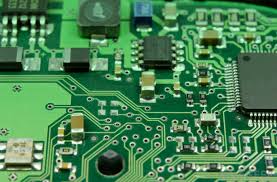It is widely used in the electronics industry; however, its flame retardant level (FR 4) is defined by NEMA standard FR 4, which is also adopted by IEC 60893 3-2. Compared to other materials, this blend of durability, cost-efficiency and insulating properties places this material at the top of the list across many applications.
High Shield Performance, Excellent Electrical Insulation
FR4: One of the trademarks of FR4 material is its excellent electrical insulating properties. This makes it a good choice for high-frequency electronic circuits, as maintaining signal integrity is a priority in these systems; its dielectric constant (Dk) typically ranges between 4.0 and 4. Such a high level of insulation is vital for minimal electrical interference and best performance usually required for high-speed electronics today.
High Thermal Resistance
FR4 is known for its thermal stability with its very low coefficients of thermal expansion, and high glass point temperature which makes it one of the biggest advantages of FR4. High-temperature favorite, FR4 can handle continuous operation at up to 130° C. This thermal stability makes it perfect for high-heat load applications, providing reliability and safety for a variety of electronic components and systems.

Mechanical Durability
FR4 is mechanically stable and chemically stable for this approach. This gives a flexural strength around 500 MPa (megapascals), and makes it very resistant to warping, bending, and snapping under load. This durability is particularly important for electronics devices that are subject to vibration, shock, or thermal cycling.
Cost-Effectiveness
FR4 proves to be cost-effective even with its high performance This maximizes the balance of cost + functionality, so suits very high-volume consumer electronics as well as high-reliability, high-certification specialized industrial applications. Its wide availability and the well-established manufacturing processes that come with it keep it cheap and easily accessible for a large spectrum of technological application.
Versatility in Applications
FR4 is also highly versatile, which has helped make it a very popular option. FR4 can be used for more than just PCBs including enclosures, insulators or even structural support for components in electrical devices. In addition, is ease to be fabricated and is opened to lamination which makes it possible to laminate it to meet different specifications, thus allowing engineers too design in a high freedom.
Environmental Resistance
It can also absorb water and can resist various chemicals such as acids and bases which is common in industrial applications. This resistance contributes to making devices and components using FR4 capable of continuing to perform without failure in a much wider range of conditions.
Conclusion
Superb function and versatility of FR4 material from electrical isolation, thermal ability without fatigue, and mechanical stability with lower cost make it outstanding for electronic manufacturing. This adaptability to various environments and applications only strengthens it as a foundational material in the electronics industry. To understand further details about fr4 material, understanding its vast range of applications and advantages can give the best idea of why it is the most important thing to use.